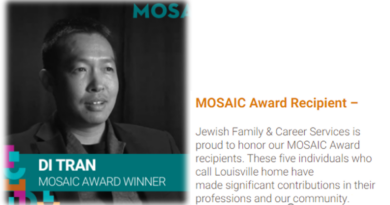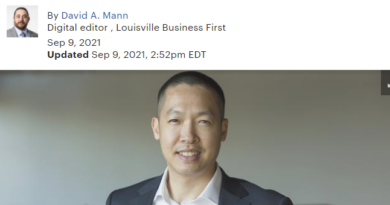Executive Order on Higher Education Accreditation Reform (April 23, 2025) – Summary and Implications
🔑 Key Gist of the Changes & Focus Areas:
🎯 1. Refocusing Accreditation on Student Outcomes
- Graduation Rates & Return on Investment: Accreditation must prioritize institutions that offer high graduation rates and positive labor market outcomes.
- Ban on Credential Inflation: Institutions should not burden students with excessive coursework or credentials that don’t yield real value.
🚫 2. Crackdown on Unlawful DEI Standards
- DEI Requirements as “Unlawful Discrimination”: The order targets accreditation standards that mandate diversity, equity, and inclusion (DEI) practices, labeling them ideological and discriminatory under federal law.
🧑⚖️ 3. Legal and Federal Oversight Enhancements
- Attorney General + Secretary of Education Investigations: Empowered to investigate and penalize accreditors that impose unlawful DEI mandates or violate state and federal authority.
🔁 4. Reintroducing Competition Among Accreditors
- Recognition of New Accreditors: Reopen applications to new accrediting bodies to break monopoly and improve quality through competition.
📊 5. Data-Driven Accreditation Requirements
- Accreditors must require program-level outcome tracking (completion, employment, earnings), without referencing race, sex, or ethnicity.
🧠 6. Emphasis on Intellectual Diversity
- Institutions must prioritize intellectual diversity among faculty to promote academic freedom and inquiry.
🛠️ 7. Streamlining Accreditation Processes
- New experimental pilot sites for innovative accreditation pathways.
- Easier transfer between accreditors for institutions misaligned with current accreditor values.
- Updated Accreditation Handbook for efficiency and transparency.
🔍 Accreditors Under Investigation or Named for Potential Action:
| Accreditor | Type | Status/Concern |
|---|---|---|
| American Bar Association (ABA) – Council of the Section of Legal Education and Admissions to the Bar | Legal Education | Under active investigation. Required law schools to “demonstrate by concrete action a commitment to diversity and inclusion,” allegedly violating Students for Fair Admissions v. Harvard. |
| Liaison Committee on Medical Education (LCME) | Medical School Accreditor | Targeted for investigation. Requires ongoing diversity efforts in student recruitment. |
| Accreditation Council for Graduate Medical Education (ACGME) | Residency and Fellowship Programs | Targeted for investigation. Promotes recruitment policies focused on underrepresented minorities. |
| Unspecified Additional Accreditors | Broad Institutional Accreditors | Statement implies other accreditors could lose recognition if found promoting “unlawful DEI practices” or failing to meet new federal standards. |
🧭 Overall Federal Direction:
- From ideology to meritocracy.
- From centralized accreditation control to open competition.
- From demographic-based oversight to performance-based assessment.
Overview of the April 23, 2025 Executive Order
On April 23, 2025, President Donald J. Trump signed an executive order to overhaul the higher education accreditation systemwhitehouse.gov. The order directs a fundamental realignment of accreditation towards student outcomes and away from what the administration deems unlawful or ideological mandateswhitehouse.gov. Education Secretary Linda McMahon is tasked with enforcing these reforms, holding accreditors accountable for poor performance or violations of federal lawmsche.orgmsche.org. The overarching goal is to ensure colleges and universities provide high-quality, high-value education that leads to student success in the workforce, rather than leaving graduates with debt and degrees of questionable valuewhitehouse.gov. Below is a summary of the key initiatives in the executive order, followed by a case study illustrating the kind of high-impact educational model these reforms aim to promote.
Key Reforms in Accreditation Policy
The executive order introduces several initiatives to strengthen accountability and quality in higher education accreditationwhitehouse.govwhitehouse.gov. These include:
- Refocusing on Student Outcomes: Accreditation standards must emphasize measurable student success outcomes like graduation rates, job placement, and return on investment (ROI) for graduates. Accreditors will be required to use program-level outcome data to drive improvements, “without reference to race, ethnicity, or sex,” ensuring a race-neutral focus on resultsmsche.org. This shift comes in response to stagnant performance under the current system – for example, the national six-year undergraduate graduation rate was only ~64% as of 2020whitehouse.gov, and nearly 25% of bachelor’s degree programs and 40% of master’s programs show a negative ROI for students (leaving them worse off financially)whitehouse.gov. By holding accreditors accountable for student outcomes, the order seeks to reverse these trends and incentivize colleges to improve completion and employment outcomes for students.
- Ending Unlawful DEI-Based Requirements: The order prohibits accreditors from enforcing diversity, equity, and inclusion (DEI) criteria that amount to unlawful discriminationmsche.org. It explicitly calls out accrediting bodies that require race-based or other prohibited preferences under the guise of DEI. For instance, the American Bar Association’s law school accreditation standards had mandated race-conscious admissions practices – standards which the U.S. Attorney General recently warned are illegalwhitehouse.gov. Similarly, medical education accreditors have imposed ideological requirements on schools (e.g. certain diversity quotas) at the expense of quality trainingwhitehouse.gov. The executive order directs the Attorney General and Secretary McMahon to investigate and take action against any such unlawful discrimination in higher edmsche.org. In short, accreditors must drop DEI mandates that violate federal civil rights laws, refocusing evaluation purely on educational quality and outcomes.
- Increasing Competition Among Accreditors: The accreditation landscape will be opened up to new entrants to spur competition. The order lifts restrictions by resuming recognition of new accrediting agencies (ending any de facto moratorium on new accreditors)msche.org. This means colleges will no longer be limited to the same few gatekeepers and can seek accreditation from newly recognized organizations that might specialize in innovative or outcome-based evaluation. To complement this, the Department of Education is instructed to streamline the accreditor recognition process – making it more consistent, efficient, and transparentmsche.org. The goal is a more dynamic accreditation market where agencies compete to demonstrate rigorous but fair quality assurance. Additionally, schools will find it easier to switch accreditors as needed, since the order calls for smoothing transitions between accreditorsmsche.org. By breaking the accreditation monopoly and bureaucracy, the policy aims to encourage innovation and reduce the “gatekeeping” power of incumbent accreditors.
- Promoting Intellectual Diversity and Academic Freedom: The executive order emphasizes the importance of intellectual diversity on campuses as a component of educational quality. It directs accreditors to value policies that promote a diversity of viewpoints among faculty, in order to advance academic freedom, open inquiry, and robust student learningwhitehouse.govwhitehouse.gov. This is a response to concerns that some colleges have become ideologically homogeneous, stifling debate. Accreditation reviews should thus give weight to institutions fostering a culture of free expression and viewpoint diversity. Moreover, the process by which accreditors are recognized by the government should itself be transparent and objective, free from ideological bias. The Department of Education will improve the accreditor recognition review process, including leveraging technology to increase transparency and efficiencymsche.org. Overall, this initiative ties accreditation to the foundational principle that higher education must welcome a spectrum of ideas and prepare students for thoughtful citizenship – not enforce one ideological worldview.
Table 1 below summarizes the issues identified in the current accreditation system and the reform actions mandated by the April 23, 2025 executive order:
| Issue in Current System | Reform Action (2025 Executive Order) |
|---|---|
| Lagging student success: Low completion (64% grad rate) and weak career outcomes for many programswhitehouse.gov. | Refocus accreditation on student outcomes – require accreditors and colleges to track and improve graduation and employment rates (outcomes data)msche.org. |
| Ideological mandates: Accreditors imposing DEI criteria that conflict with law (e.g. race-based standards)whitehouse.gov. | Ban unlawful DEI requirements – accreditors will be penalized for requiring any practices that constitute unlawful discriminationmsche.org. |
| Accreditor monopoly: Few recognized accreditors, little choice or innovation; burdensome process to get new accreditors. | Open up competition – resume recognizing new accreditors to foster alternativesmsche.org; streamline the federal recognition process for faster, transparent approvalmsche.org. |
| Lack of accountability: Accreditors approving low-quality institutions, contributing to high student debt. | Accountability measures – Education Dept can monitor, suspend, or terminate recognition of accreditors that fail to ensure quality or violate standardswhitehouse.gov. |
| Ideological conformity: Campuses lacking intellectual diversity, chilling academic freedom. | Prioritize intellectual diversity – require accreditors to consider campus policies on free inquiry and viewpoint diversity as part of qualitywhitehouse.gov. |
As the fact sheet from the White House notes, these reforms “prioritize student outcomes, eliminate unlawful discrimination, promote academic freedom and intellectual inquiry, and restore accountability” in higher educationwhitehouse.gov. By implementing the above changes, the administration seeks to rebuild public trust in higher education, after a period in which many students ended up with soaring debt and degrees of questionable valuewhitehouse.gov. In sum, the executive order aims to realign accreditation with the core mission of colleges: delivering educational and economic value to students, free of politicized agendas.
Exemplary Model – Louisville Beauty Academy’s High-Impact Education
One institution that exemplifies the kind of outcomes-driven, high-impact education envisioned by these reforms is Louisville Beauty Academy (LBA) in Kentucky. LBA is a state-licensed (state-accredited) beauty college that has achieved remarkable success without relying on federal student aid or traditional accreditation. Its experience highlights how a focus on student outcomes and practical skills can empower communities, and why accreditation reform should elevate such schools rather than gatekeeping them through bureaucracy.
Outstanding Student Outcomes: Louisville Beauty Academy boasts a graduation and job-placement success rate exceeding 95%linkedin.com. Over the past eight years, LBA has produced nearly 2,000 graduates, the vast majority of whom quickly enter employment in their field – working in salons, spas, or even starting their own businesseslinkedin.com. This completion rate (~95%) is far above the national average in higher education, and it reflects the academy’s hands-on, flexible training model. Table 2 compares some key outcomes of LBA with typical U.S. higher education outcomes:
| Outcome Metric | Louisville Beauty Academy (LBA) | U.S. Higher Ed Average |
|---|---|---|
| Graduation Rate | ~95% program completionamazon.com (industry certificates) | ~64% 6-year graduation (bachelor’s)whitehouse.gov |
| Job Placement Rate | >90% employed in-field (graduates quickly work in beauty industry)louisvillebeautyacademy.netamazon.com | Varies by major; many graduates face underemployment (e.g. ~41% of new college grads in jobs not requiring a degreewhitehouse.gov)*. |
| Return on Investment (ROI) | High ROI: Low-cost programs, minimal debt; graduates earn ~$42,000/year on averagelouisvillebeautyacademy.net, recouping costs quickly. | Mixed/Low ROI: 25% of B.A. and 40% of M.A. degrees have negative ROI for studentswhitehouse.gov (debt not offset by earnings). |
| Federal Aid Utilization | None – “Debt-Free Learning” (pay-as-you-go tuition, no federal loans)linkedin.com. Students graduate with little or no debt. | High – Over $100 billion/year in federal student loans and grants flow to accredited collegeswhitehouse.gov, contributing to an average student debt >$30,000. |
<small>Sources: LBA outcomes from internal reportslinkedin.comamazon.com; national data from U.S. Dept. of Education and researchwhitehouse.gov.</small>
LBA’s stellar outcomes show that short, skill-focused programs can yield better returns for students than many traditional four-year degrees. For example, a nail technician certificate from LBA takes only months to complete, yet graduates can immediately earn income in the beauty industry. The academy calculated that its 1,000+ graduates (as of early 2024) collectively generate over $20 million in annual economic impact in Kentucky – a figure that could be as high as $42 million depending on income assumptionslouisvillebeautyacademy.net. Even using conservative estimates, that’s an economic impact of ~$21 million over seven years, simply by enabling people to gain job skills and start careerslouisvillebeautyacademy.net. By contrast, many college graduates spend four years in school and accumulate significant debt, only to struggle finding good-paying jobs. LBA’s model demonstrates how outcome-focused education directly contributes to workforce development and the local economy.
Innovative, Student-Centric Model: Several factors set Louisville Beauty Academy apart as a model of community-based education:
- No Federal Aid, No Debt: LBA operates outside the federal Title IV financial aid system, which typically requires institutional accreditation. Instead, it offers “debt-free learning” via pay-as-you-go tuition plans and scholarships, so students can afford classes without taking loanslinkedin.com. This approach removes the debt burden and aligns incentives – the school succeeds only when students persist and graduate, not by maximizing tuition through federal loans. It also means LBA had to prove its value in the open market from day one, rather than relying on guaranteed federal funds.
- Short-Term, High-ROI Programs: Unlike many cosmetology schools that limit offerings to longer programs like cosmetologist diplomas (partly to qualify for federal aid), LBA provides a wide range of licensed short programs – including nail technician, esthetician, makeup artist, shampoo/stylist, instructor training, etc.louisvillebeautyacademy.net. By offering shorter certificates, the academy opens the door for more students (especially working adults or those with families) to quickly gain a marketable skill and start earning. These short-term programs often have better ROI than a traditional college path; students invest a few months of training and a few thousand dollars, and can immediately obtain jobs that pay a reliable income. This fulfills exactly the kind of “career and technical education” outcomes that higher-ed reformers have been championing.
- Flexible, Workforce-Oriented Training: LBA’s schedule and curriculum are built for working learners. Classes are scheduled to accommodate students who hold jobs or family responsibilitieslouisvillebeautyacademy.net. The training emphasizes practical, hands-on skill mastery and preparation for the state licensing exams. By focusing on competency and confidence rather than just seat-time or theory, the academy ensures that over 90% of its students achieve certification/licensure on their first attemptlouisvillebeautyacademy.net. The environment is highly supportive: many of LBA’s students come from underprivileged or immigrant backgrounds, so the school provides bilingual instruction and a nurturing, “family” atmospherelouisvillebeautyacademy.netlouisvillebeautyacademy.net. This inclusive approach leads to high retention and completion even among non-traditional students.
- Publishing and Community Empowerment: As part of its mission, Louisville Beauty Academy engages in extensive knowledge-sharing and community outreach. The academy’s leadership has self-published over 100 books and guides related to beauty education and professional development (including multilingual training manuals)louisvillebeautyacademy.netamazon.com. Notably, LBA’s founder Di Tran authored “Louisville Beauty Academy: A Revolutionary Model for Beauty Education & Investment,” a book that documents the school’s successful approach and provides a blueprint for replicationamazon.comamazon.com. In it, Tran describes how LBA “removes unnecessary barriers, eliminates student exploitation, and focuses on true workforce readiness,” and how the model is profitable and scalable for potential franchiseesamazon.com. Indeed, LBA has begun offering franchise and licensing opportunities for others to open similar academies (there is even a second Louisville location opened in 2025)louisvillebeautyacademy.net. This “train-the-trainer” mentality turns LBA into a community empowerment model – not only educating students, but also empowering entrepreneurs to bring the model to new communities. Such bottom-up innovation is precisely what a reformed accreditation regime should encourage.
Louisville Beauty Academy’s achievements have not gone unnoticed. The school was recognized as one of the most impactful small businesses in Louisville, and its CEO Di Tran was honored as a “2024 Most Admired CEO” by a local business journallouisvillebeautyacademy.net. More importantly, LBA’s success has drawn attention to the rigidity of the current accreditation system. Without being federally accredited, LBA cannot accept Pell Grants or federal loans, which initially limited some low-income students’ ability to attend. The academy navigated this by keeping tuition low and partnering with local nonprofits/employers for scholarships. Now, LBA is in the process of obtaining accreditation from the National Accrediting Commission of Career Arts & Sciences (NACCAS)louisvillebeautyacademy.net, a recognized national accreditor for cosmetology schools, and expects to become Title IV eligible. But the fact that a school with 95% graduation and placement had to wait years for approval illustrates how traditional accreditation can act as a gatekeeper. Accreditation reform should aim to streamline recognition of such proven institutions, so that students at high-quality schools are not inadvertently penalized by lack of access to aid or recognition.
Conclusion and Policy Recommendations
President Trump’s April 2025 executive order represents a significant push to refocus higher education on value and outcomes. By holding accreditors accountable, outlawing ideological litmus tests, introducing competition, and insisting on intellectual diversity, the policy seeks to realign accreditation with students’ interestswhitehouse.gov. However, true success will depend on implementation. As the Department of Education (under Secretary Linda McMahon) operationalizes these directives, it should take the opportunity to recognize and uplift high-performing non-traditional schools as benchmarks for what success looks like. Institutions like Louisville Beauty Academy – with their outstanding outcomes, innovative delivery, and community impact – should be integrated into the accreditation fold as exemplars, not held at arm’s length.
Policy Recommendation: Create a streamlined recognition pathway for high-performing, non-traditional programs. For example, the Department could establish an alternative accreditation or direct certification for schools that consistently exceed outcome benchmarks (e.g. >90% completion and placement, proven ROI). Such schools might undergo a simplified review focused on outcomes and compliance with basic fiduciary standards, rather than the full bureaucratic process that favors traditional colleges. This would allow students at these institutions to access federal aid if needed, leveling the playing field without lowering standards – in fact, it rewards higher standards of success. Additionally, existing accreditors should be encouraged (or required) to study these models and incorporate their best practices. Rather than forcing innovative programs to conform to outdated criteria, accreditation standards themselves should evolve to reflect real-world success metrics.
In summary, the accreditation reforms set forth in April 2025 signal a new era of accountability and innovation in higher education. They aim to ensure that taxpayer dollars and students’ time are invested in programs that deliver results – graduates who are educated, employable, and free from indoctrination or discrimination. Leveraging models like Louisville Beauty Academy as a guide, policymakers can transform accreditation from a bureaucratic hurdle into a catalyst for educational excellence. By simplifying recognition for proven high-impact schools and using them as benchmarks, the system will ultimately better serve students, employers, and communities. This alignment of incentives – focusing on what works – is the cornerstone of a more vibrant, equitable, and outcome-driven higher education system for the future.
References: Official White House Fact Sheet and executive order detailswhitehouse.govmsche.orgmsche.orgwhitehouse.gov; U.S. Department of Education and Department of Justice statements on accreditation and civil rightswhitehouse.gov; Louisville Beauty Academy reports and publications for outcome datalinkedin.comamazon.comlouisvillebeautyacademy.net; Kentucky state legislative records and local news on LBA’s community impactlouisvillebeautyacademy.netlouisvillebeautyacademy.net. Each of these sources underscores a common theme: when accreditation is refocused on students and open to innovation, schools that truly empower students can flourish, to the benefit of all.




